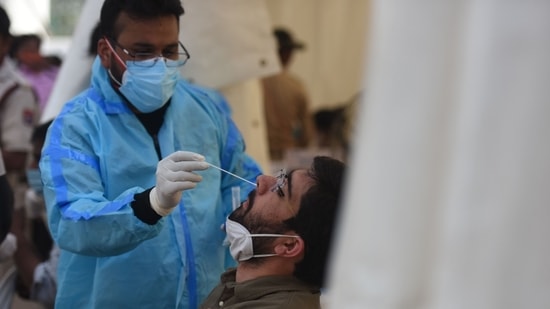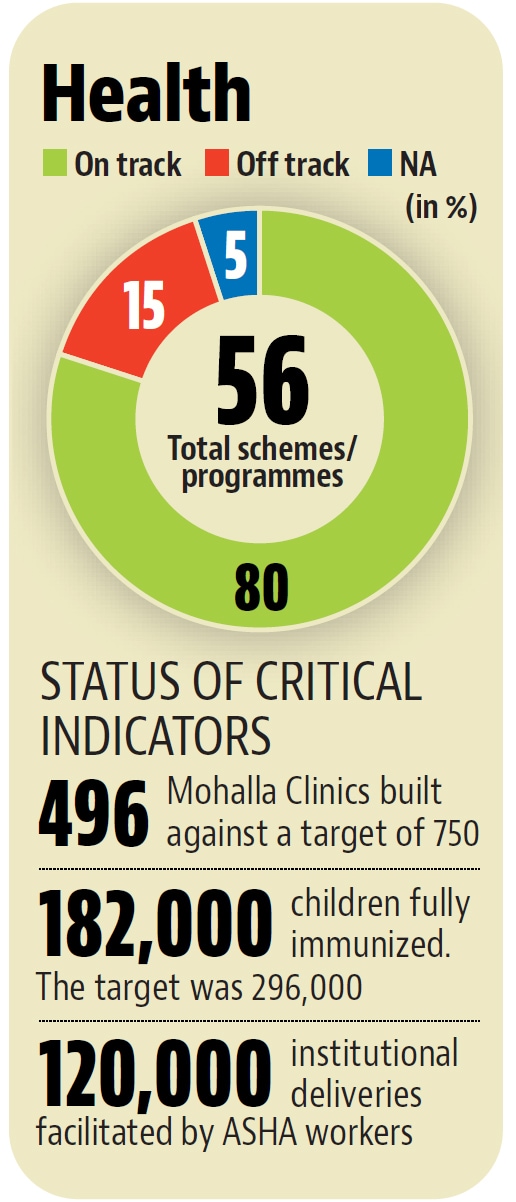Delhi among states that tested the most for Covid
There were 87.8 lakh Covid-19 tests conducted in the city till December 31, 2020.
Delhi was among the states that conducted the highest number of Covid-19 tests in the country, deputy chief minister Manish Sisodia said on Monday while presenting the outcome budget in the Delhi assembly.

There were 87.8 lakh Covid-19 tests conducted in the city till December 31, 2020, of which nearly 36% were done using the more accurate RT-PCR method. This ratio has further improved over the past two months, with two of every three tests being conducted using the RT-PCR method.
“Just as a comparison, when Delhi was testing at the rate of 4,400 tests per million population daily, Kerala which was the second highest in tests in India (at that time), was testing at the rate of 2,300 tests per million daily. The all India average was 1,300 test per million,” Sisodia said while tabling the outcome budget.
He also said the city was able to manage three waves of the dreaded infection – 8,593 cases were reported in a single day during the third wave in November – due to timely augmentation of hospital infrastructure as well as by starting home isolation.
At its peak, the city had 18,718 hospital beds, 882 beds in a step-down Covid Health Centres, and 8,273 beds in Covid Care Centres, where patients who had a mild infection and had no facilities for home isolation were admitted.
There were 1,463 ventilators, and 6,070 non-invasive ventilation options such as BiPaP and high flow nasal oxygen were also made available across hospitals. The Delhi government also set up a real-time app to ensure that people did not have to go from hospital to hospital in search of beds.
“Responding to the surge in cases during this period, Delhi government innovated and created the world’s first home isolation programme. Home isolation meant that patients could recover in the comfort and emotional security of their homes,” he said. The government had distributed over 60,000 pulse oximeters to those in home isolation to regularly check their oxygen saturation and 3,000 oxygen concentrators were also given to those who had trouble maintaining their oxygen levels.
Apart from the Covid related work, the Delhi government also opened two newly constructed hospitals in Burari and Ambedkar Nagar amid the pandemic.
This was much needed, as the economic survey, also presented on Monday, showed that Delhi’s beds-to-population ratio had dipped in 2019 to 2.74 beds per 1,000 persons, as compared to 2.96 beds per 1,000 persons the year before.
The World Health Organization recommends a ratio of five beds per 1,000 population. In terms of absolute numbers, the hospital beds went down to 54,321 in 2019 from 57,709 the year before.
Most of this reduction happened in the private sector where the number of hospitals and nursing homes reduced to 1,151 in 2019 as compared to 1,175 the previous year.
“Almost 45% to 50% of the CGHS and ECHS beneficiaries live in Delhi and avail of health-care services in city hospitals. Now, the rates for these are very low and the disbursement takes time. This has led to financial crisis in many small centres. Then, there is Ayushman Bharat which also pays less than these empanelment for almost 80% of the procedures. Plus, there is no new investment coming in. All this has led to smaller hospitals closing down,” said Girdhar Gyani, director general of Association of Healthcare Providers (India).
Dr Girish Tyagi, who recently stepped down as president of the Delhi Medical Association, said, “Covid-19 worsened the situation because for many months, there were very few patients at smaller hospitals.”
The number of beds, however, went up in Delhi government hospitals from 11,770 in 2018 to 12,464 in 2019. The two hospitals in Ambedkar Nagar and Burari will add over 1,300 beds to the government’s total and the hospital in Dwarka-- which is almost complete -- will add another 1,700 beds. In addition to that, another 9,000 beds will be added to Delhi government’s tally with the remodelling of 15 of its existing hospitals, according to the economic survey.
A total of 496 mohalla clinic have been set up across the city so far, according to the outcome budget presented by Sisodia on Monday. The government has almost reached the halfway mark of its target of setting up 1,000 such clinics across the city – one per every inhabited square kilometre in Delhi.





